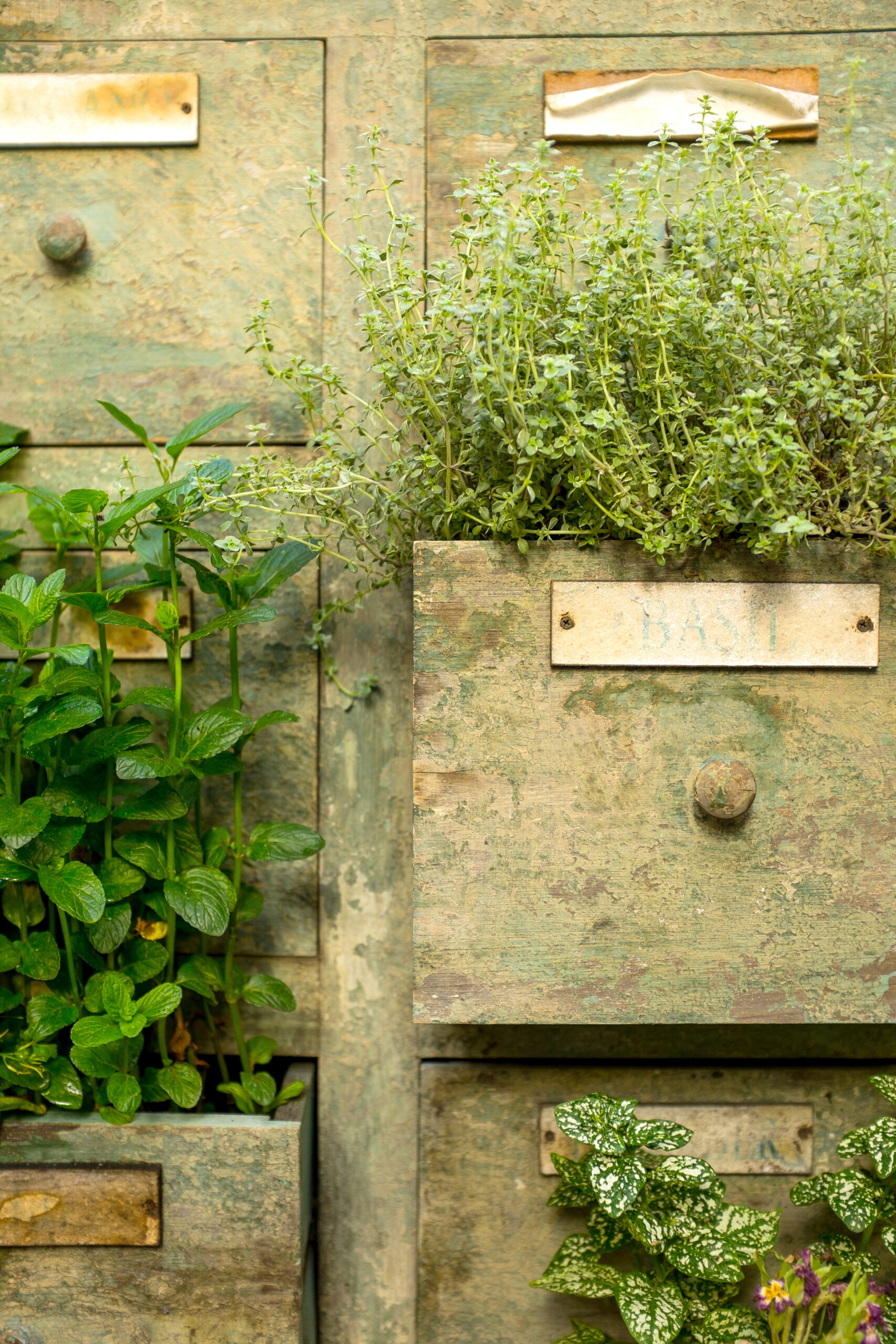Writer | Tracy Donohue
Indoor Herb Gardens
While growing herbs indoors can have its challenges, if you want to enjoy the convenience and cost-savings of having fresh herbs available at home year-round, it’s worth a try. And, as an uplifting bonus, an indoor herb garden offers beauty, charm and incredible fragrance to your home environment.
Before starting your herb garden inside, it is essential to determine which favorite herbs you want to grow and to assess your home for available space with direct sunshine. Most popular herbs such as basil, mint, rosemary, cilantro, oregano, parsley, sage and thyme can be successfully grown indoors under the right conditions. If you’re new to growing herbs indoors or have limited space, you may want to start with just a few young plants and, if space allows, add new herbs as you become successful and more confident.
“Determining the best herbs to grow inside is a bit of trial and error,” says Jackie Walley, member of The Herb Society of America – Southern Michigan Unit (hsasmu.org), and owner of Ann Arbor-based Herbal Thymes and Gatherings Elite Landscaping Services (jwherbs.com). In her over three decades of experience with herbs, she has had the most success indoors with growing rosemary and sage.
As with most indoor plants, growing herbs requires a balance of light, temperature and water.
Typically, herbs require at least six hours of sunlight each day so plants should be placed in the sunniest spot available in your home. “A doorwall with an open back shelf is ideal for plants — so is a kitchen garden window or bay window,” Walley says. She emphasizes that to ensure the plant grows evenly, it’s important to rotate each container a quarter-turn every few weeks to balance the amount of sunlight on each area of the plant. Herb plants should also be allowed ample space for air circulation and growth.
Grow lights and kits can be useful tools if your home does not have an area that receives enough sunlight to successfully grow plants. There are a wide variety of artificial lighting and grow kit options available locally and online depending on individual lighting, space and budget considerations. These kits can be a pricey investment but will help provide the proper light needed if your home does not have a sunny space to allow an herb garden to flourish.
Most herbs grow best in daytime temperatures ranging from 65 to 75 degrees Fahrenheit. However, care should be taken to ensure plants are not touching cold window glass or placed too close to a drafty window.
Water, humidity and drainage are additional key considerations. Since the air inside is less humid, plants can dry out more easily so regular watering is needed — of course, being careful not to overwater. Walley stresses the importance of selecting containers with drainage holes to avoid fungus and mold growth. She also recommends using a quarter-strength of any fertilizer each month to keep indoor herb plants healthy.
When it comes to incorporating the fresh flavors of homegrown herbs to add a burst of flavor to your everyday cooking, she encourages creating easy-to-make-and-store pesto, butters, oils, vinegars and simple syrups. “Making simple syrups is so easy and rewarding,” Walley says. “There are so many delicious combinations, like lavender and strawberry. Simple syrups are versatile and can be used for anything from cocktails to ice cream to pancakes.”
In addition to using fresh herbs in her kitchen, Walley dries herbs at a low temperature in the oven to create milder flavors. She also regularly uses edible flowers and seeds from herbs for added flavor in salads and pasta dishes.
Before using or consuming freshly picked herbs, Walley recommends gently cleaning them. “Submerge herbs in a tub of water taking care to rinse and dislodge any sediment. Be sure to completely dry your herbs as you don’t want to introduce moisture into your products. Use a salad spinner then lay herbs out on a paper towel and blot. Use the shake test to make sure all moisture is gone before using herbs in a recipe or drying them out.”
For easy-to-follow recipes that add special flavor from your herb garden to everyday dishes, one of Walley’s go-to sources is The Herbal Pantry, a book by Emilie Tolley and Chris Mead, featuring recipes for a variety of herb-flavored oils, vinegars, seasonings and condiments.
“Don’t be afraid to experiment in your kitchen with herbs — it’s so rewarding. If it doesn’t come out the first time, then just readjust. Have fun with it!”








